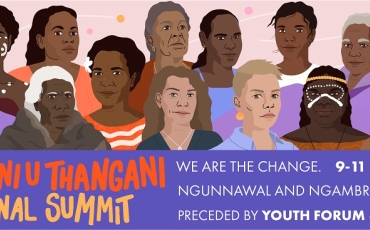Targeted recruitment of Aboriginal and Torres Strait Islander people

See also Summary Guide to Targeted recruitment of Aboriginal and Torres Strait Islander people Word Summary Guide Targeted recruitment of Aboriginal and Torres Strait Islander for web.docx
Please be aware that this publication may contain the names or images of Aboriginal and Torres Strait Islander people who may now be deceased.
Message from the Aboriginal and Torres Strait Islander Social Justice Commissioner and the Race Discrimination Commissioner
Most people are aware of the entrenched disadvantage that Aboriginal and Torres Strait Islander people experience, particularly in employment. The employment gap between Aboriginal and Torres Strait Islander peoples and non-Indigenous Australians has in fact widened in recent years.[1] According to the Prime Minister’s most recent Closing the Gap report, the proportion of Aboriginal and Torres Strait Islander people aged 15-64 years who are employed fell to 47.5 per cent in 2012-13, while the proportion of non-Indigenous Australians who are employed increased to 75.6 per cent.
Increasingly, employers are seeking to address this issue by providing opportunities in their workplaces. We welcome recruitment strategies that are designed to increase the representation of Aboriginal and Torres Strait Islander people in the workforce. Unfortunately, there is some misunderstanding that discrimination laws are an obstacle to addressing the inequality experienced by Aboriginal and Torres Strait Islander people in employment. On the contrary, discrimination laws recognise that some groups, including racial groups, have suffered historical disadvantage and do not enjoy their human rights equally with others. These laws permit employers to adopt ‘special measures’ to assist disadvantaged racial groups so that they can have similar access to opportunities as others in the community.
This guideline will help employers to use the ‘special measure’ provisions in the federal Racial Discrimination Act 1975 (Cth) and state and territory discrimination laws, to target Aboriginal and Torres Strait Islander people for recruitment. We believe this is an important resource for employers seeking to advance the rights of Aboriginal and Torres Strait Islander peoples.
Mick Gooda
Aboriginal and Torres Strait Islander Social Justice Commissioner
Dr Tim Soutphommasane
Race Discrimination Commissioner
Notes
[1] Note - Use of the terms ‘Aboriginal and Torres Strait Islander peoples’ and ‘Indigenous peoples’ in this guideline: The Australian Human Rights Commission recognises the diversity of the cultures, languages, kinship structures and ways of life of Aboriginal and Torres Strait Islander peoples. The terminology ‘Aboriginal and Torres Strait Islander peoples’ is used throughout this guideline. Sources quoted in this guideline may use various terms including ‘Indigenous Australians’, ‘Aboriginal and Torres Strait Islanders’, ‘Aboriginal and Torres Strait Islander people(s)’ and ‘Indigenous people(s)’. Also, Australian governments use the terms ‘Aboriginal and Torres Strait Islander people/s’, ‘indigenous people/s’, ‘Aboriginals’, and other variations in their documents. This usage is preserved in quotations and extracts from these documents, and in the names of documents, to ensure consistency.



